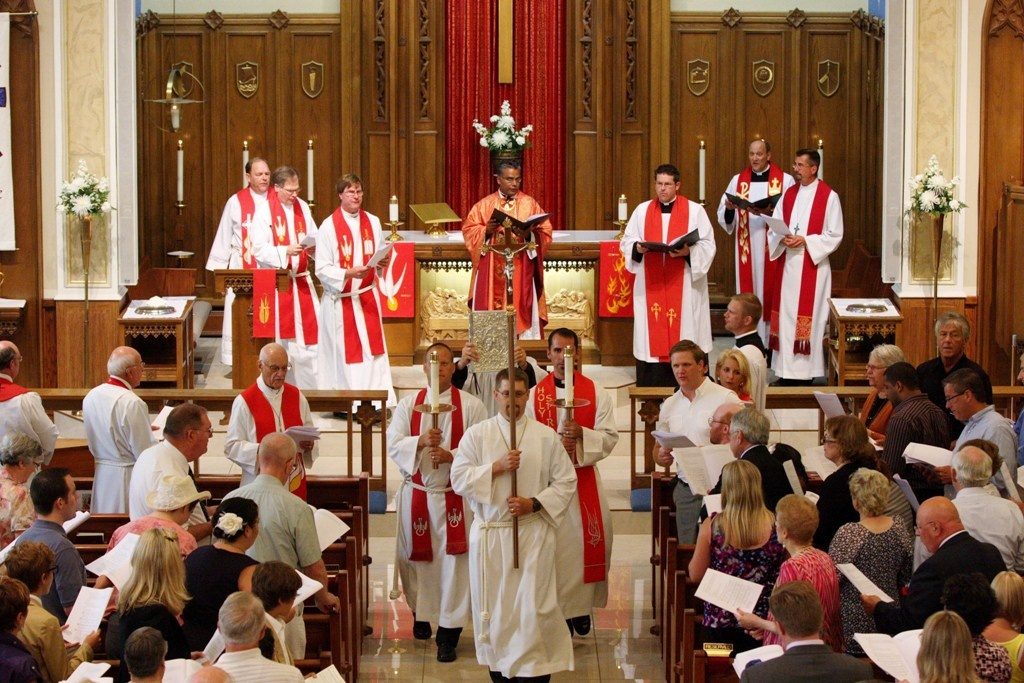In Catholic Europe from the 14th to the 15th centuries, there was a reign of discontent with the morals of some of the priests. People were outraged by the trade in indulgences. The emerging desire for change led in the 16th century to the emergence of a movement to reform Catholicism. It was founded and led by Martin Luther, a Catholic priest from the German city of Wittenberg.
On October 31, 1517, he nailed to the door of the temple in which he served, 95 theses that laid the foundation for the teachings of Protestantism. At the beginning of the protest, Luther did not try to create a new denomination, but in his theses he touched on the theological aspects of Catholicism. The protest found deep sympathy for the German political elite. After the first reaction of Rome, the parties were reconciled. Opponents did not keep him waiting, and Luther’s popularity grew.
The Proclamation, published in 1520 by Luther, diminished the authority and authority of the Roman throne. The Pope declared Luther a heretic.
Edict of Worms
Emperor Charles, elected in 1519, supported Catholic Rome. By the edict of Worms in 1521, Luther was declared a heretic. The publication, distribution and reading of his works were prohibited. The Saxon Elector Frederick the Wise patronized Luther, hiding him from persecution in a secluded estate. Seizing the opportunity, Luther began translating the New Testament.
The war with the French distracted the emperor’s attention from domestic problems, thanks to which the new movement acquired a massive character. In the absence of the movement’s founder, Protestants, Wittenberg was led by Melanchthon. In 1521, he expounded and published the system of Protestant teaching in accessible language. In 1522 Luther publishes a German translation of the New Testament. Monks left monasteries, started families, took lay jobs, and priests got married. Luther had to reassure the radical reformist in Wittenberg. The protest grew into a popular uprising, the so-called. Peasant Wars.
First Speyer Reichstag
At the Diet of 1526 in the city of Speyer, the German princes passed a decree suspending the Edict of Worms. The resolution of the religious dispute was delayed until the national council. According to the Edict of Worms, it was unanimously decided that “each region will live, be governed, and believe in the way it wants to answer before God and His Imperial Majesty.” The Reichstag gave the Protestants a break. Luther publishes a large and small catechism.

Second Speyer Reichstag
The 1529 Reichstag was attended by Emperor Charles V, faithful to Catholicism. Under his influence, the Edict of Worms was renewed, the decisions of the first Speyer Sejm were canceled. Lutherans, represented by 6 princes and 14 free cities, openly protested the decisions of the Catholic majority, setting out their arguments in writing in the “Protest”. By the name of the document, the supporters of the Reformation began to be called Protestants.
Augsburg Confession
In 1530, another Diet was held in Ausburg in the presence of Emperor Charles V. The monarch did not abandon his attempts to reconcile the parties. The Protestant princes presented a presentation of the foundations of their teaching, systematized by Melanchthon and approved by Luther, which went down in history as the “Augsburg Confession”. The Catholics refuted the Lutheran arguments. The action of the Worms’ decree was confirmed. To resolve religious contradictions, it was proposed to convene a General Council. Until then, the Protestants were ordered not to spread their teaching.
Schmalkalden League and Nuremberg Religious World
In 1531, the Lutheran princes, led by the Saxon and Hesse princes, and the free cities, in response to the religious policy of Emperor Charles V, concluded a military alliance at the Schmalkalden congress. New members quickly began to join him. The position of the emperor became critical due to the attack of the Turks. In 1532, in Nuremberg, he concluded the first religious peace with the Protestants on the condition that the latter retained secularized property until the resolution of the religious conflict at a cathedral or Reichstag. The princes promised help to the emperor in the fight against the Turks.
Death of Luther and the Schmalkalden War
Luther died in 1546. The death was unexpected and difficult. A few months later, Emperor Charles V, with the support of Pope Paul III, launched a decisive military campaign against the vassals of the Schmalkalden League. The emperor insisted that the war was being waged not for religious but for political reasons, against the separatism of his vassals. After a series of battles, on April 24, 1547, at the Battle of Mühlberg, the imperial troops utterly defeated the troops of the Schmalkalden League. With the Wittenberg surrender, many of the land holdings of the losers passed to the allies of Charles V.